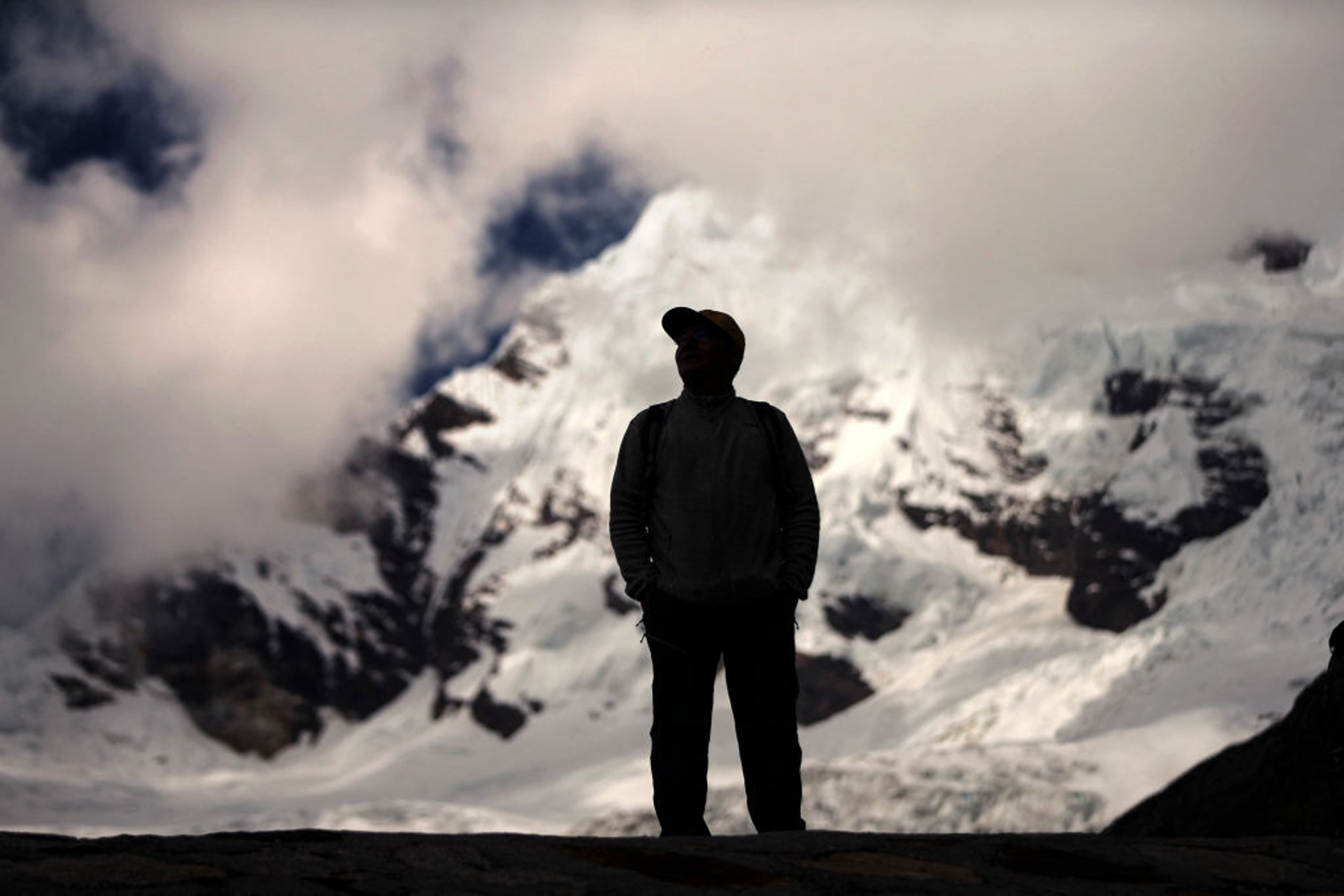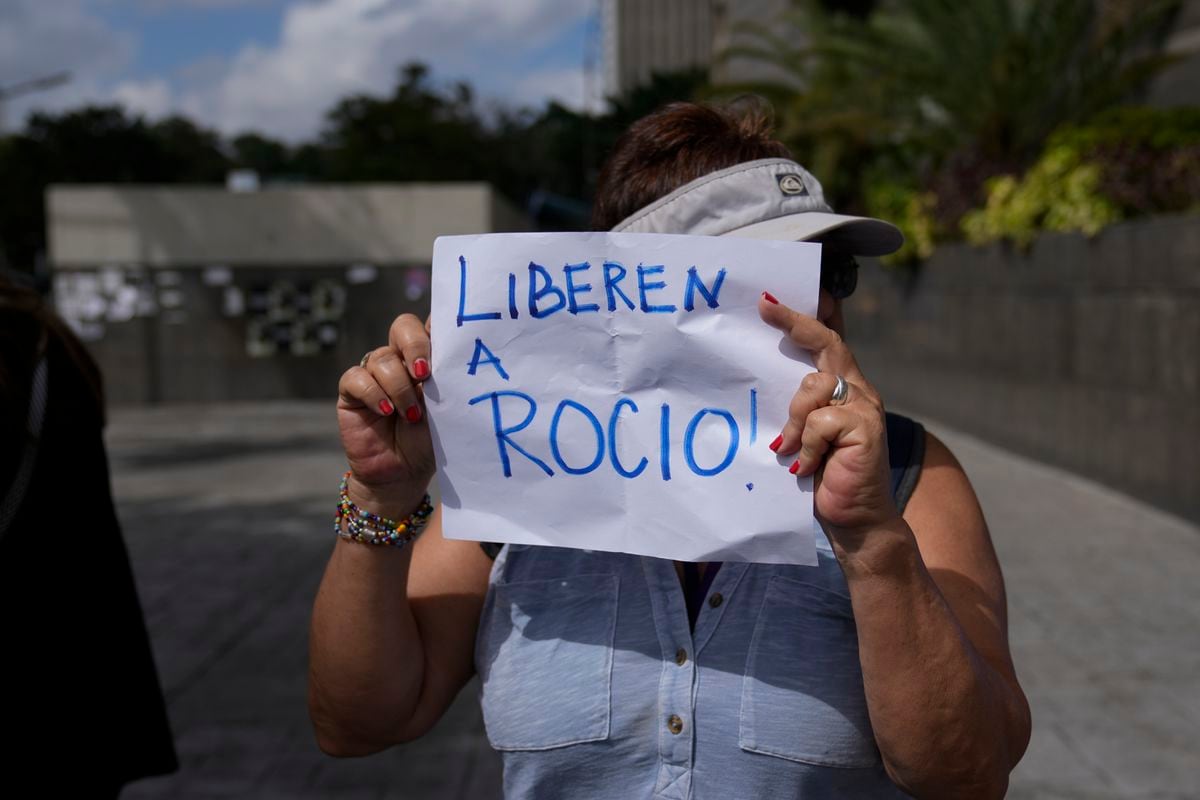Glaciers in crisis: less and less ice 0:44
(CNN Spanish) --
"Glaciers are melting at one of the highest rates globally."
If you read this sentence, you probably think of the Arctic or Antarctica.
But no: that is what is happening in Latin America and the Caribbean, according to the most recent research released by the World Meteorological Organization (WMO).
In the tropical Andes —which cover Venezuela, Colombia, Ecuador, Peru and part of Bolivia— glaciers have lost more than 30% of the area they occupied since the 1980s, says a new report from the WMO, an organization dependent on the United Nations, which analyzes the state of the climate in the region.
In Venezuela, the blow was lethal: "The small glacial coverage that we had in Venezuela disappeared recently," says Rodney Martínez, representative for North, Central and Caribbean America of the organization, who participated in the elaboration, in a dialogue with CNN en Español. Of the report.
America is a rich continent that is being destroyed.
These are your most pressing environmental issues
"This retreat of the glaciers is taking place in a sustained manner. The closer we are to the equatorial part, this is greater, but definitely the retreat of the glaciers is taking place, and the decrease in the coverage of the snow-capped mountains is taking place" , Explain.
This means that the area near the tropics is the most affected —in Peru, for example, some glaciers have lost more than 50% of their water— while the situation is less drastic towards the south of the continent, although the melting continues without stopping. .
advertising
Is it possible to stop this process?
If the excessive emissions of greenhouse gases were stopped tomorrow - a scenario that, moreover, is impossible to conceive according to the projected emissions trajectory - the "inertial effect" would be maintained "for a considerable time", Rodney explains.
That is why the reduction of emissions is key for the planet to be habitable in the long term, of course, but for the region it is also key to "shield itself" right now.
Preserving ecosystems, for example by regulating land use, can "attenuate" the rate of affectation of melting.
It is not also a question of landscaping.
"Millions of people in the Andes would be affected" by the risk of water scarcity due to the loss of mass from glaciers.
The 3 points in Latin America most vulnerable to sea level rise
The report's warnings far outweigh the issue of glacial melting.
The increase that "has accelerated in recent years" has a direct link with warming for two reasons: with a higher temperature the volume of water tends to increase and to this is added the melting of glaciers.
The rate of increase differs between subregions, he explains.
The range goes from 2.5 to 3.5 mm per year and the two areas with the greatest increases are the South Atlantic coast, that is, the coasts off the south of Brazil, Uruguay and Argentina, where an increase of 3, 52, mm year from 1993 to 2021 and the subtropical North Atlantic and Gulf of Mexico, where the figure rose to 3.48.
Sea level rise threatens coastal populations through at least four effects: contamination of freshwater aquifers, coastal erosion, flooding in low-lying areas, and increased risk of tidal surges.
Among the places that are most affected by the rise in sea level, the Caribbean islands must also be counted, since these small island states "depend completely on marine activity and what happens in the coastal zone."
"So, from the point of view of vulnerability, the Caribbean islands may have slightly fewer anomalies per year, but they are in a situation of much greater exposure and vulnerability than the rest of the region," explains Martínez.
And the temperatures?
Talking about climate and climate change necessarily implies talking about heat and extreme weather events.
In this field, the report found that the warming trend continued in 2021 and that the region grew about 0.2 ºC per decade from 1991 to 2021, double what was recorded from the 1960s to 1990.
The north is suffering from unprecedented heat.
Will the same thing happen in the southern summer?
Argentina, Brazil, Chile, Paraguay and Peru are some of the countries that suffered heat waves last year, according to the report, which allows the recorded events to be viewed on this interactive map.
Above-average temperatures prevailed across the continent.
Parts of central Brazil, Colombia, central Chile, and central and southern Argentina saw temperatures between one and two degrees Celsius above average, while other areas recorded below average temperatures.
Droughts were another of the phenomena that hit Latin America and the Caribbean.
The mega-drought in central Chile stands out, which has been going on for 13 years, making it the largest in the region in at least 1,000 years, as well as the drought in the Paraná and La Plata river basins.
sea level riseClimate changeglaciers





/cloudfront-eu-central-1.images.arcpublishing.com/prisa/AWQDFA55JRFZ7EFY4XGGS3VAVQ.jpeg)


